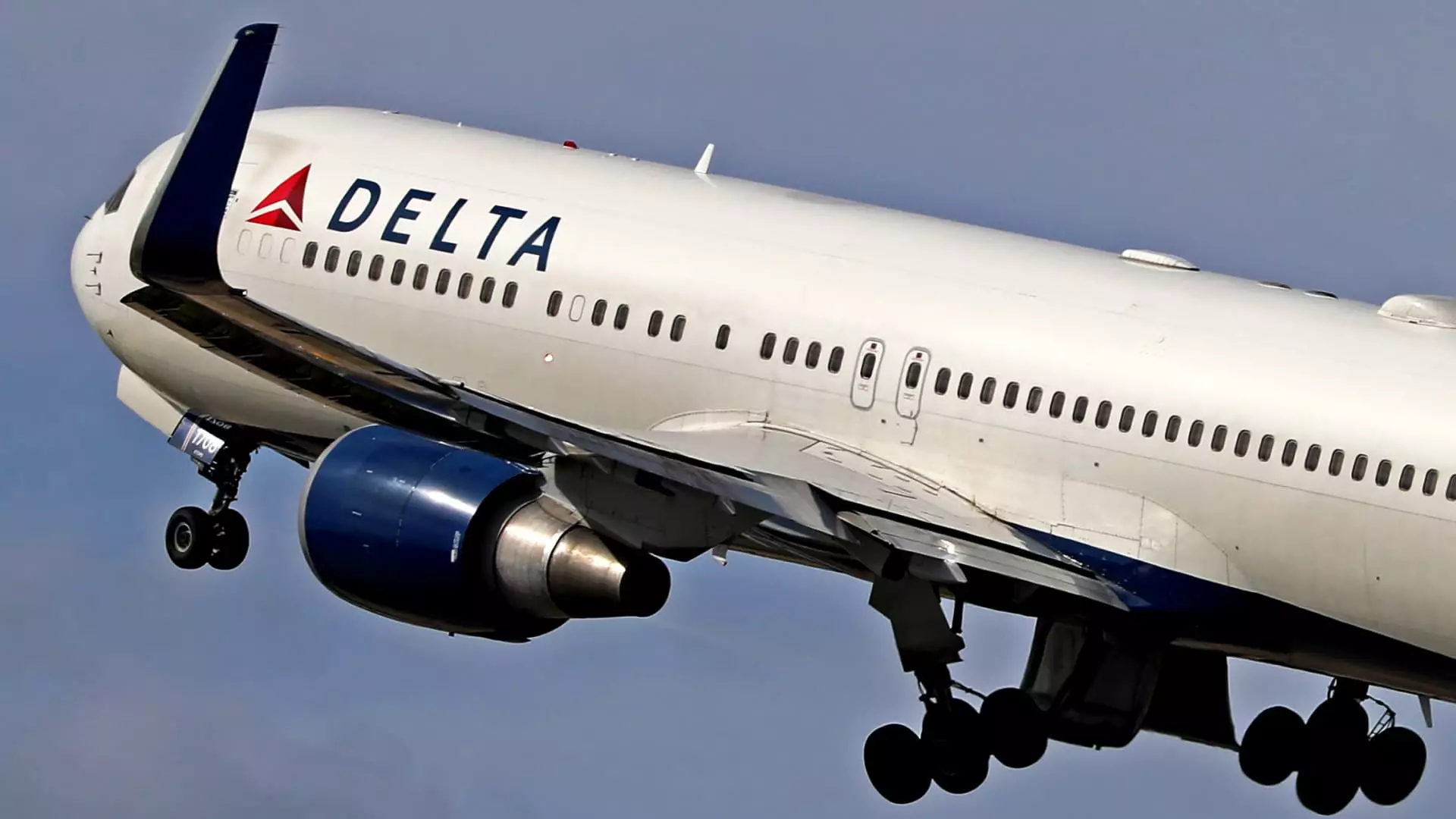The airline industry, once a bastion of stability and growth, is facing a crisis that shows no signs of abating. On Tuesday, a significant drop in airline stocks sent shockwaves across Wall Street as concerns mount regarding diminishing travel demand—triggered by a volatile economic landscape characterized by waning consumer confidence and impending tariffs. The decline isn’t just a random fluctuation; it is a clear signal of a larger problem brewing beneath the surface.
Delta Air Lines: A Cautionary Tale
Delta Air Lines, often heralded as the most profitable airline in the U.S., has not escaped the turbulence. Following a downgrade in its stock rating by Jefferies—from a buy to a hold—Delta’s shares plummeted more than 2%. Jefferies slashed its price target almost in half, reflecting a cautious outlook that suggests Delta is likely to face even stiffer headwinds in its 2025 forecasts. This demotion is rooted in Delta’s earlier announcement of reduced first-quarter guidance, which raises critical questions about the airline’s ability to navigate a challenging commercial ecosystem where travelers are becoming increasingly cautious, particularly those with tighter budgets.
The Impact Across the Industry
Delta’s struggles are symptomatic of a broader malaise afflicting the airline sector. American Airlines and Southwest Airlines were also downgraded by Jefferies, with shares suffering across the board. Southwest, in particular, saw a staggering decline of over 5%, which could indicate a concerning trend for budget travelers, frequently the backbone of U.S. airline revenue. With United Airlines standing as the lone U.S. carrier maintaining a ‘buy’ rating—albeit with a significantly reduced price target—it’s clear that an air of trepidation envelops the industry.
Understanding Consumer Behavior
A report from Bank of America reveals a worrying divergence in consumer spending. While overall household credit and debit card spending rose by 1.5%, airline spending fell by an alarming 7.2%. This disconnect suggests that many households are reassessing their discretionary spending habits. The hesitance to book trips can certainly be traced back to fluctuating consumer confidence; individuals appear less inclined to invest in travel, potentially influenced by external factors like bad weather or the timing of holidays. However, to dismiss these numbers as merely seasonal would be shortsighted; this data may very well indicate a fundamental shift in how consumers engage with travel, particularly in a post-pandemic world.
The Bigger Picture: Tariffs and Economic Anxiety
The looming threat of tariffs adds another layer of complexity to this already fragile situation. Such economic impositions not only affect airline profit margins but also create a ripple effect of anxiety among potential travelers. When consumers sense economic uncertainty, they tend to curtail spending on travel. Therefore, the immediate future looks bleak for airlines unless a drastic change occurs in either consumer sentiment or external economic conditions.
The airline industry finds itself at a crucial crossroads, highlighting the precarious balance between economic confidence and consumer behavior. As these challenges unfold, one can only hope that the industry’s resilience will shine through, guiding it back to more stable skies.


Leave a Reply